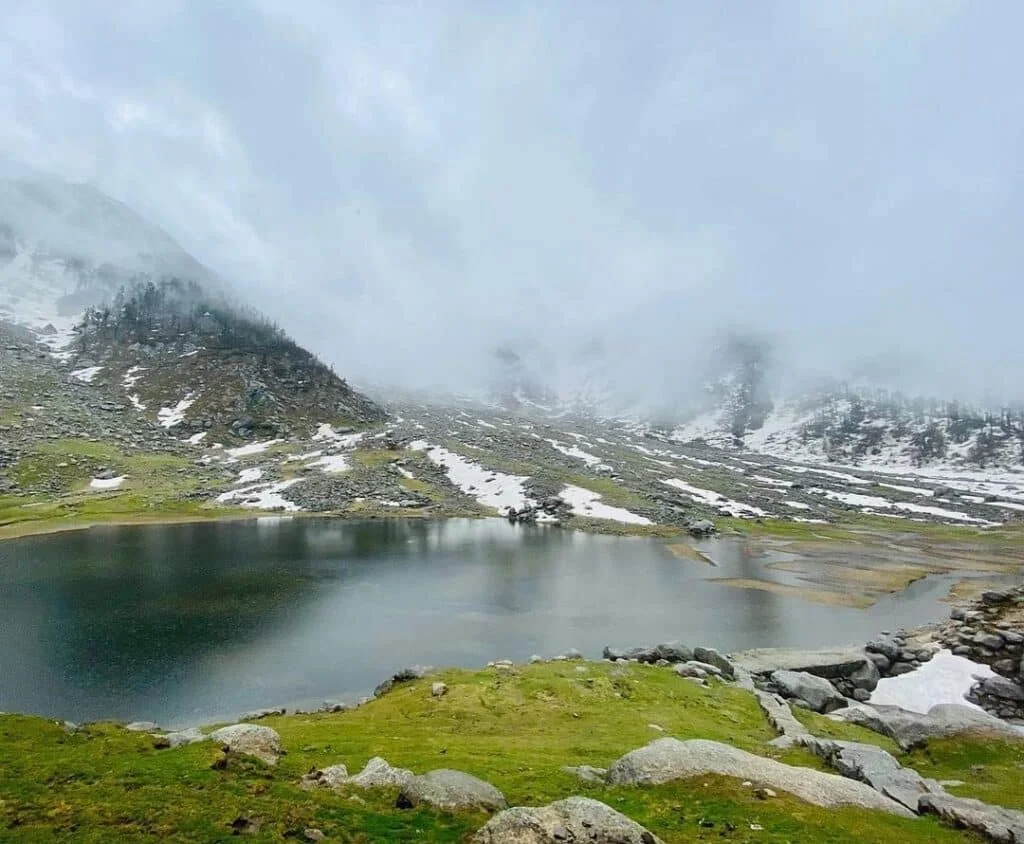Kareri Lake Trek
Why Trek to Kareri Lake?
- Natural Beauty: The Kareri Lake Trek offers trekkers a chance to experience the pristine beauty of the Dhauladhar Range. The route is rich in biodiversity, with forests, meadows, and streams that are home to a variety of flora and fauna. The trek also provides stunning views of the snow-capped peaks, including Minkiani Peak and Indrahar Pass.
- Peace and Tranquility: One of the highlights of the Kareri Lake Trek is the peaceful and serene environment. The lake itself is an incredibly peaceful destination, perfect for those seeking solitude and relaxation. Whether you’re a nature lover, photographer, or simply looking to disconnect, this trek offers an ideal escape from the busy world.
- Adventure: While the trek is not extremely difficult, it still provides a satisfying challenge for trekkers. The gradual ascent, combined with diverse terrains and changing landscapes, makes for an adventurous and rewarding experience. The trek can also be extended if you wish to explore surrounding peaks and meadows.
- Off-the-Beaten-Path Trek: Unlike some of the more popular treks in Himachal Pradesh, the Kareri Lake Trek remains relatively untouched by mass tourism. This makes it an excellent option for those who are looking for an authentic trekking experience away from the crowds.
Route and Difficulty
The Kareri Lake Trek is considered to be of moderate difficulty. The trek is accessible to those who are relatively fit and have some trekking experience. The total distance of the trek is approximately 30 kilometers, and it can be completed in 3-4 days, with a gradual ascent to the lake.
Day 1: The trek begins from Kareri Village, which is around 27 kilometers from McLeod Ganj. The trail follows a well-defined path through dense forests of oak and pine, gradually ascending towards Kareri Lake. The first day is usually spent trekking to Rioti, a small village, where trekkers often camp for the night.
Day 2: On the second day, trekkers continue the ascent through alpine meadows and beautiful forests, eventually reaching Kareri Lake. The second day offers magnificent views of the surrounding peaks and is the most rewarding part of the trek. Once you reach the lake, you can spend time soaking in the surroundings or even camping near the lake.
Day 3: After spending some time at Kareri Lake, trekkers return to Kareri Village by retracing the same route.
The terrain is varied, with rocky patches, dense forests, and snowfields (in winter), making it important for trekkers to be prepared for different conditions. The altitude gain is gradual, but trekkers should still take necessary precautions for altitude sickness.
Best Time to Trek
The Kareri Lake Trek can be done year-round, but the best time to trek is from March to June and September to December.
March to June: During the summer months, the weather is pleasant, and the trek is more accessible as the paths are clear of snow. The temperature is moderate, and trekkers can enjoy the lush greenery and blooming wildflowers along the trail.
September to December: The post-monsoon months offer clear skies and crisp weather, making it ideal for trekking. This time of year provides spectacular views of the snow-capped mountains, and the trail is relatively dry.





